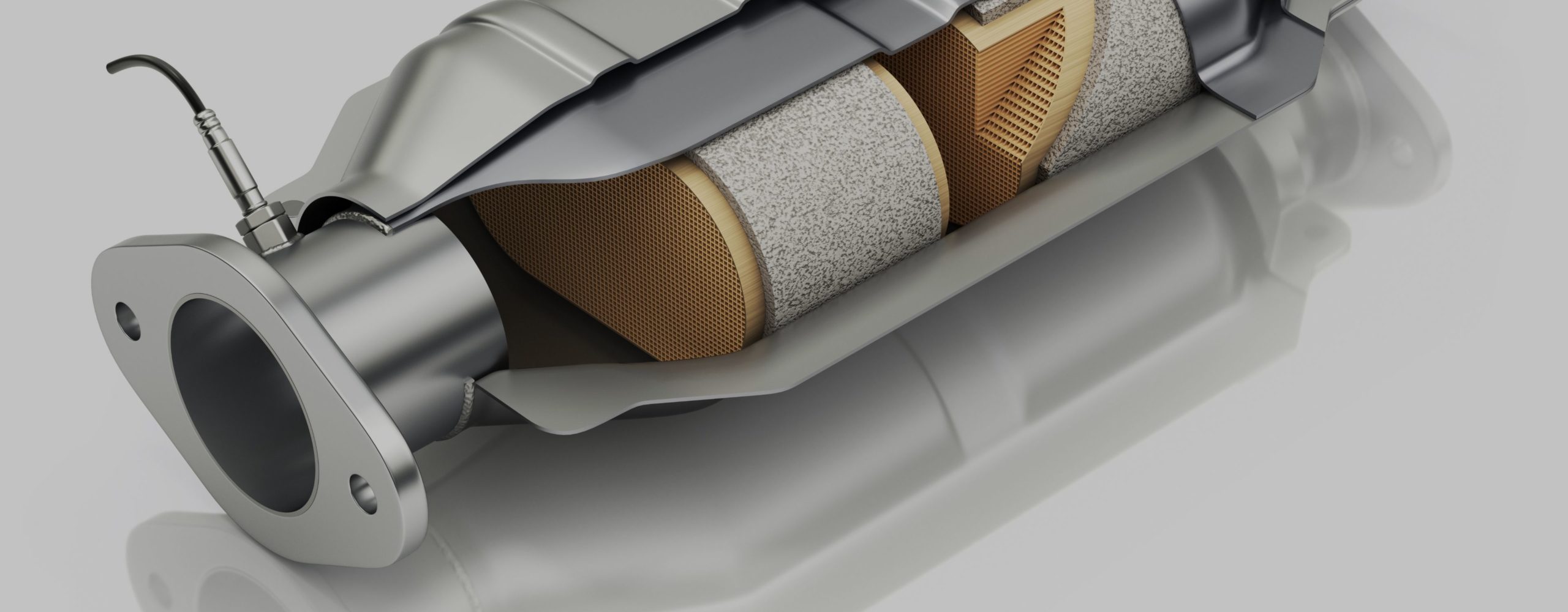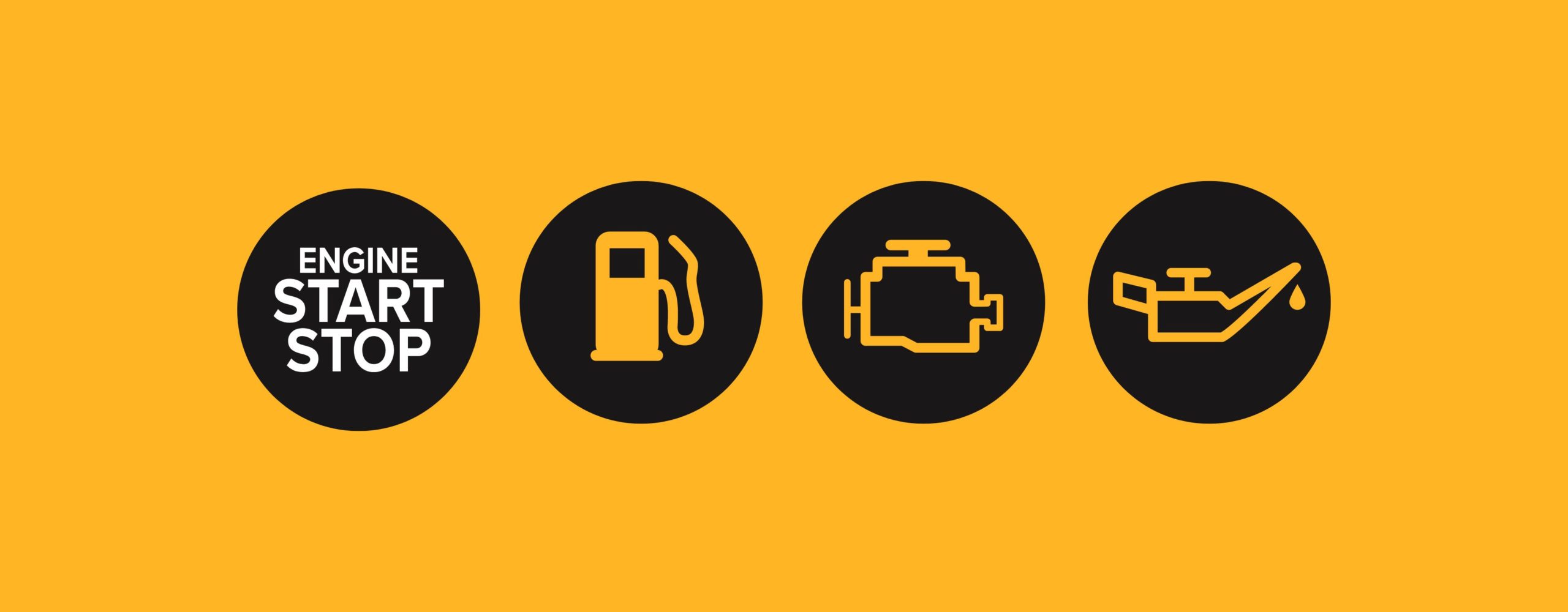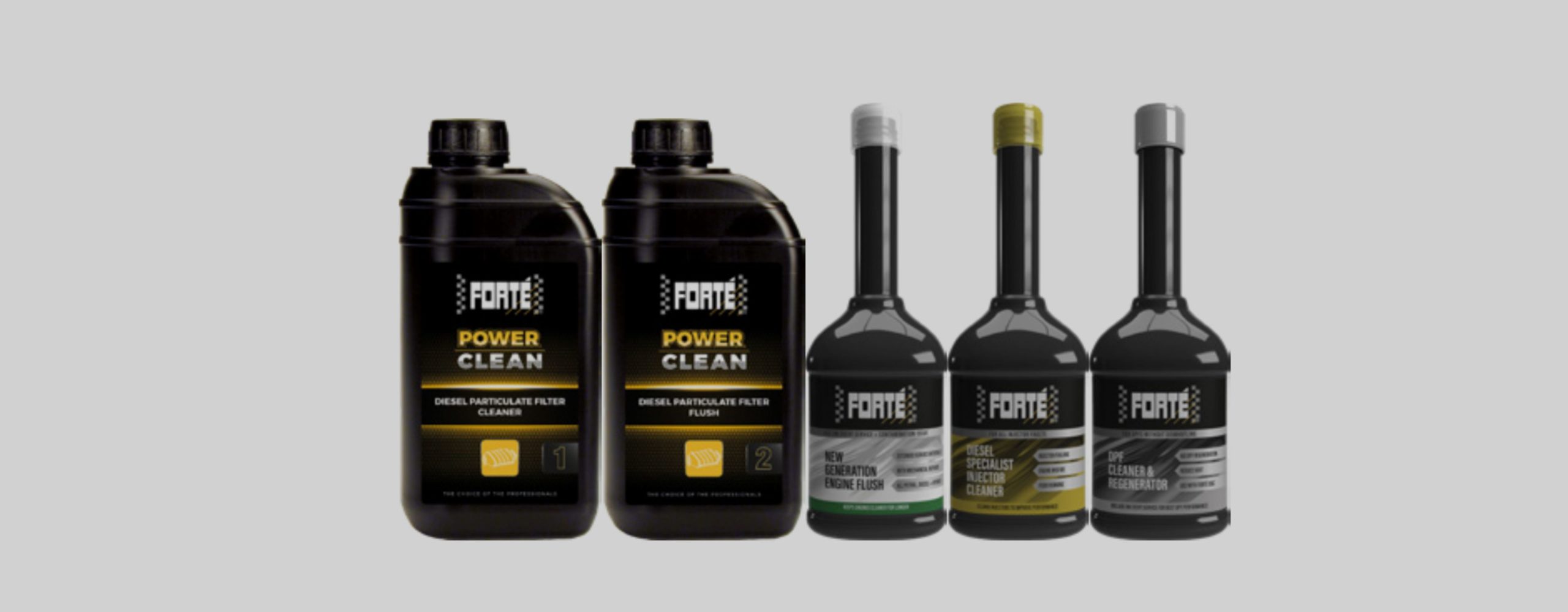Forté Technical Tips – Choosing the right DPF cleaning fluid solution
We understand, it can be hard to choose the right DPF cleaning fluid for your customers’ vehicles and their varying issues, which is why at Forté, we believe in ‘diagnosing the problem, not the filter’. Join us as we take a closer look at how to prevent regeneration and how to effectively choose the right DPF solution.

What are the different types of regeneration?
In order to effectively choose the right DPF cleaning fluid, you need to first understand the differences between the types of regeneration.
Driving style is crucial for controlling soot particulates. Short, stop-start journeys
can prevent Diesel Particulate Filter (DPF) regeneration. As soot accumulates in the DPF, the management system initiates regeneration to burn it off.
Regeneration typically occurs when driving above 40mph for over 10 minutes, and includes the following types…
- Passive Regeneration – Occurs during driving when exhaust temperatures exceed 250°C
- Active Regeneration – Occurs if passive regeneration fails. When driving, the engine management system increases the fuel quantity through the injection system or via a fuel vaporiser, increasing the exhaust temperature to over 550°C
- Forced Regeneration – This is performed using a diagnostic tool, either while the vehicle is stationary or in motion. Essential checks, such as oil level, quality and coolant levels, must be completed before performing a forced regeneration
What will prevent regeneration?

There are many reasons why a DPF will not regenerate correctly. The cause must be investigated when diagnosing a system fault.
- Stop-start driving
- Low fuel level (below a 1/4 tank)
- Low exhaust temperature (due to poor combustion or dirty injectors)
- Oil contamination or poor quality
- Faulty EGR valve
- Air leaks in the intake system
- Sensor failures (temperature, pressure, oxygen, speed)
- EML (warning light) on
- Low additive tank level (e.g. Eolys)
- Malfunctioning load components (heated windows, seats, A/C)
- Driving with windows open (to prevent cabin fumes)
How do I choose the right DPF cleaning fluid solution?
Now you understand how to prevent regeneration, it’s time to look at the right solution for your customers’ vehicles. You need to first start diagnosing the problem, not the filter, which is key to ensuring a first time repair.
After identifying the cause of failed regeneration, a decision on how to clean the DPF can be made. When cleaning the DPF, the cleanliness of the oil and fuel system is vital.
- Clean the oil system with New Generation Engine Flush and change the oil and filter. This will restore engine efficiency and ensure the oil protects the engine and reduces wear
- Add Diesel Specialist Injector Cleaner to the fuel tank to restore combustion efficiency and exhaust gas temperature
- Add DPF Cleaner and Regenerator to the fuel tank to lower the soot burn temperature
The DPF Cleaning fluid checks you need to do for the best results

DPF CLEANING – PRE-CHECKS
Vehicle and engine pre-checks must be carried out before a treatment.
- Check the engine oil level – If the oil level is too high due to dilution during failed regeneration attempts, carry out an engine flush and change the oil and filter before cleaning the DPF
- Check the pressure – Pipes between the DPF and the pressure sensor for damage and blockages. Any of these will affect the pressure sensor reading and affect the regeneration process
- Ensure vehicle is at operating temperature
DPF REPAIR – ESSENTIAL CHECKS
- Validate DPF pressure sensor and ensure correct operation
- Manually check DPF pressure to determine a filter blockage
- Correlate actual DPF pressure with the pressure sensor signal. This can indicate a DPF mechanical failure (soot blockage and internal filter collapse) or if you are diagnosing an electrical fault (sensor failure). A clean DPF should idle around 0.5kPa at a maximum of 15kPa at 3500 rpm
- Check operation of 5th injector or fuel vaporiser, if fitted
- If soot loading level has been excessive, the DPF data may require resetting before fault codes will clear correctly
The Forté DPF solutions you need…
DPF CLEAN: IN-TANK
With soot loading below 70% the vehicle may present the DPF warning light which is telling the driver to run the vehicle for active regeneration to take place. In many cases an ‘in-tank’ solution can rectify the fault using Forté DPF Clean & Regen.
- Add New Generation Engine Flush to the crankcase
- Add Diesel Specialist Injector Cleaner + DPF Cleaner and Regenerator to the fuel tank
- Allow to idle for 45 minutes
- Carry out oil and filter change
- Carry out road test at a constant speed over 40mph for at least 10 minutes
- Reset DPF data and clear fault codes
DPF REPAIR: DIRECT CLEAN
When the engine management light is illuminated and a fault code is present, active regeneration will not take place. Mechanical intervention is required to clean the DPF with Forté Power-Clean.
- Power-Clean (4-in-1 or Exhaust) allows direct cleaning of the DPF without the need to remove it from the vehicle
- Connect Power-Clean (4-in-1 or Exhaust) to vehicle
- Carry out Power-Clean DPF Cleaner and Flush treatments as directed
- Add Diesel Specialist Injector Cleaner + DPF Cleaner and Regenerator to the fuel tank
- Carry out New Generation Engine Flush and replace oil and filter
- Carry out road test
- Reset DPF data and clear fault codes
DPF REPAIR: OFF-CAR
For a heavily blocked DPF and when the blockage back pressure prevents the engine from running, you may need to remove the DPF and manually clean it with Forté DPF Off-Car Cleaner.
- Remove DPF and suspend in a position, over a suitable container, with the back of the DPF facing up
- Apply 2 x DPF Off-Car Cleaner to the DPF and allow to soak for 30 minutes
- Rinse with hot water until fluid runs clear
- Dry DPF and refit to vehicle
- Add Diesel Specialist Injector Cleaner + DPF Cleaner and Regenerator to the fuel tank
- Carry out New Generation Engine Flush and replace oil and filter
- Carry out road test
- Reset DPF data and clear fault codes
Learn more about our effective DPF cleaning fluid, and to ensure you’re using the best solutions for your customers’ vehicles.
Now you have a better understanding of DPF cleaning solutions, and the importance of diagnosing the problem, not the filter, you can ensure your customers are satisfied with your garage service when you use our specially formulated DPF products. For more on this topic, or if you have a query about our products, please get in touch with us.
